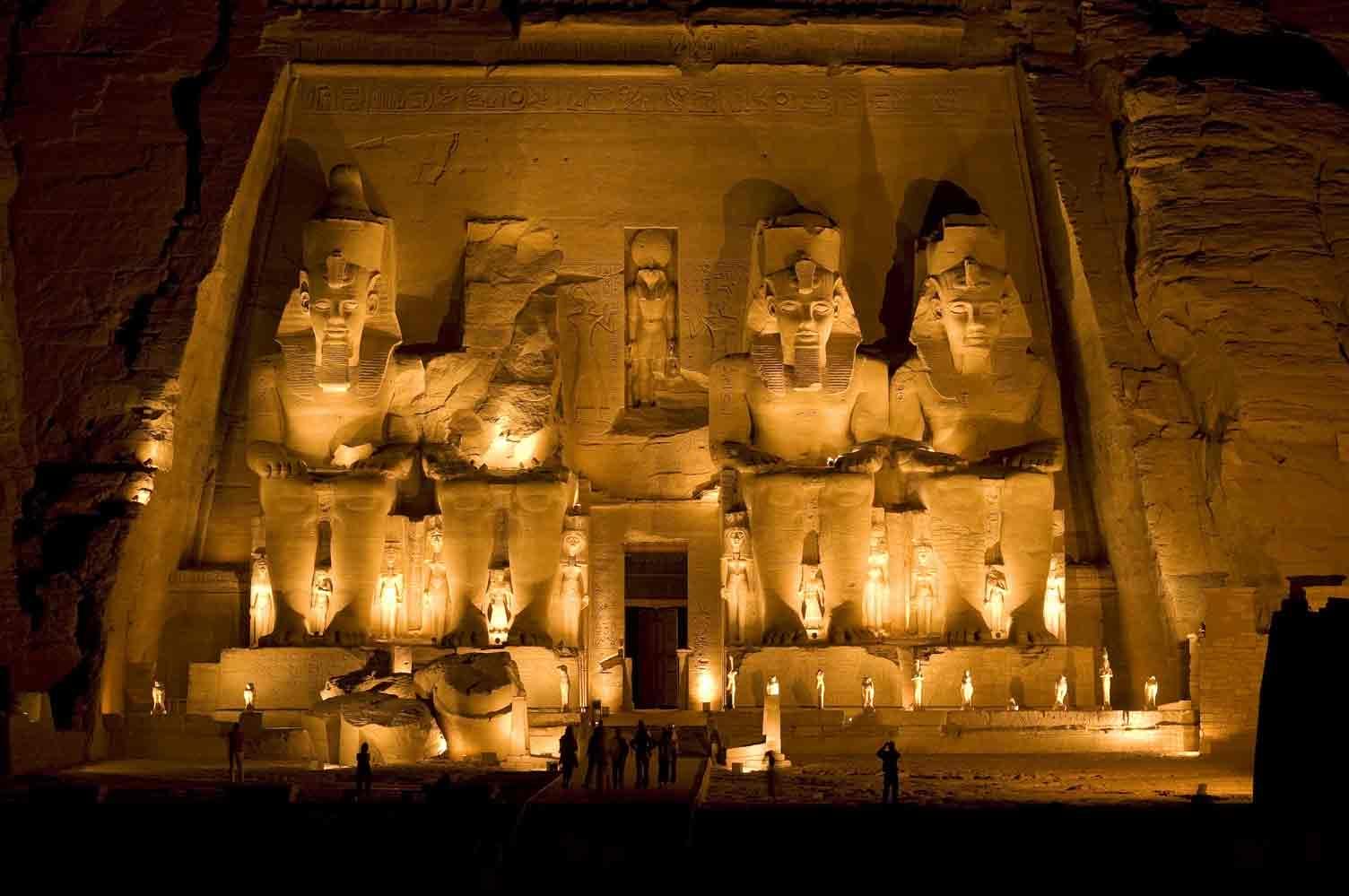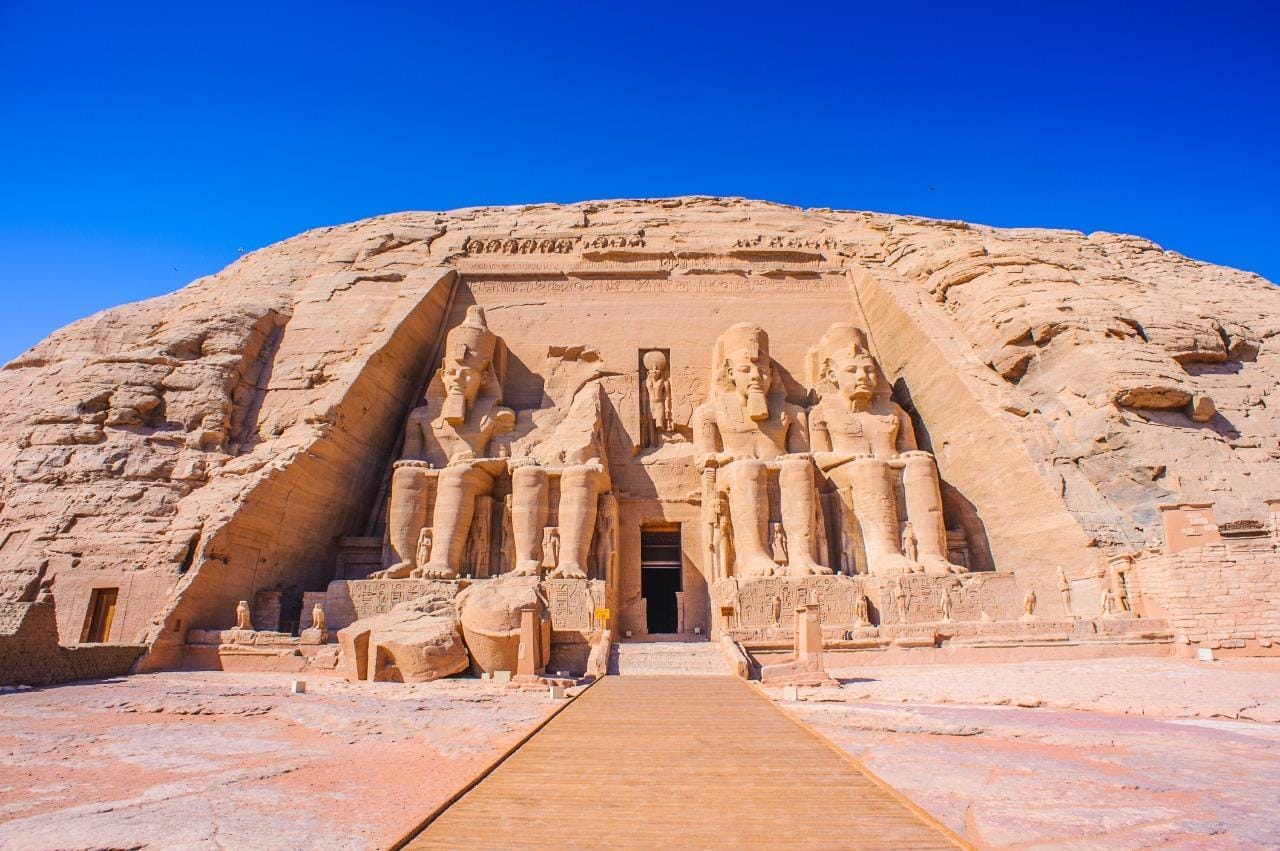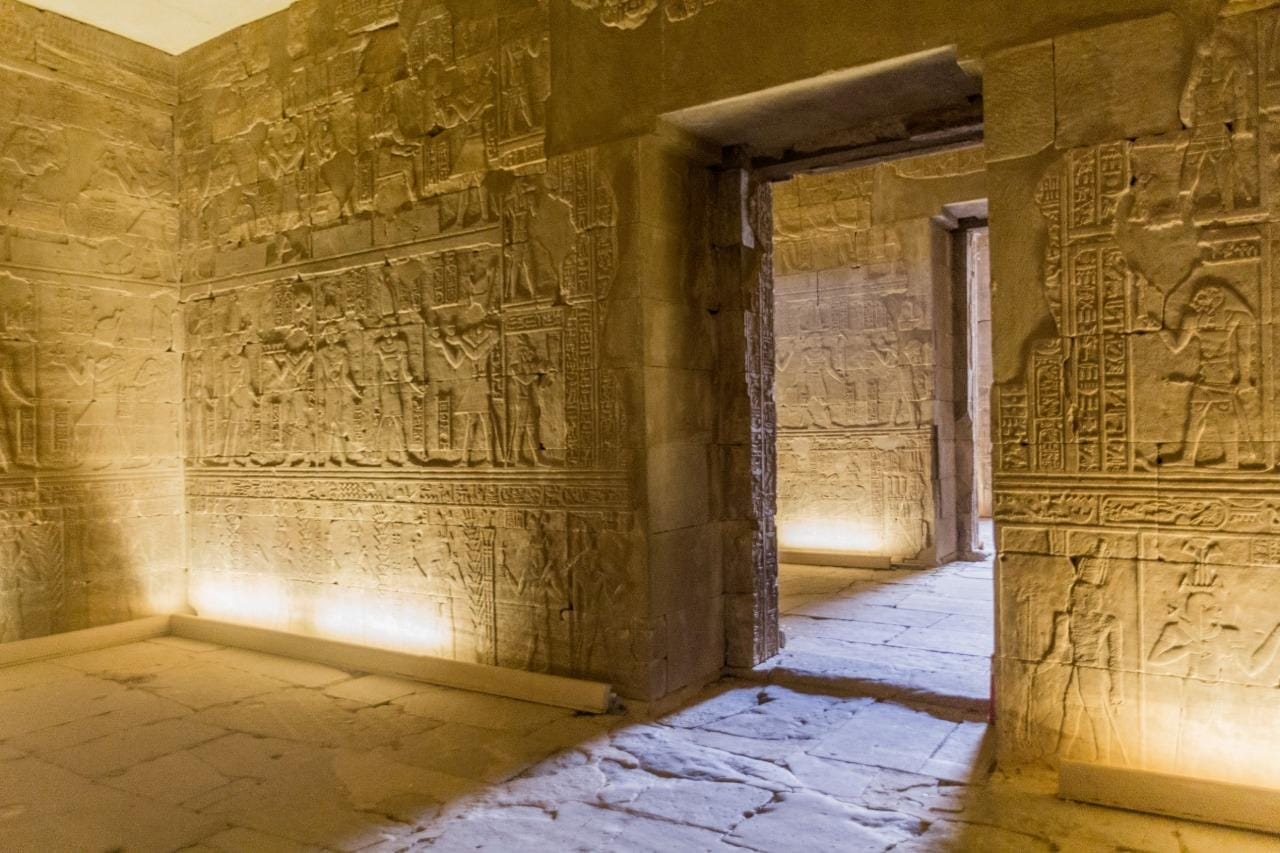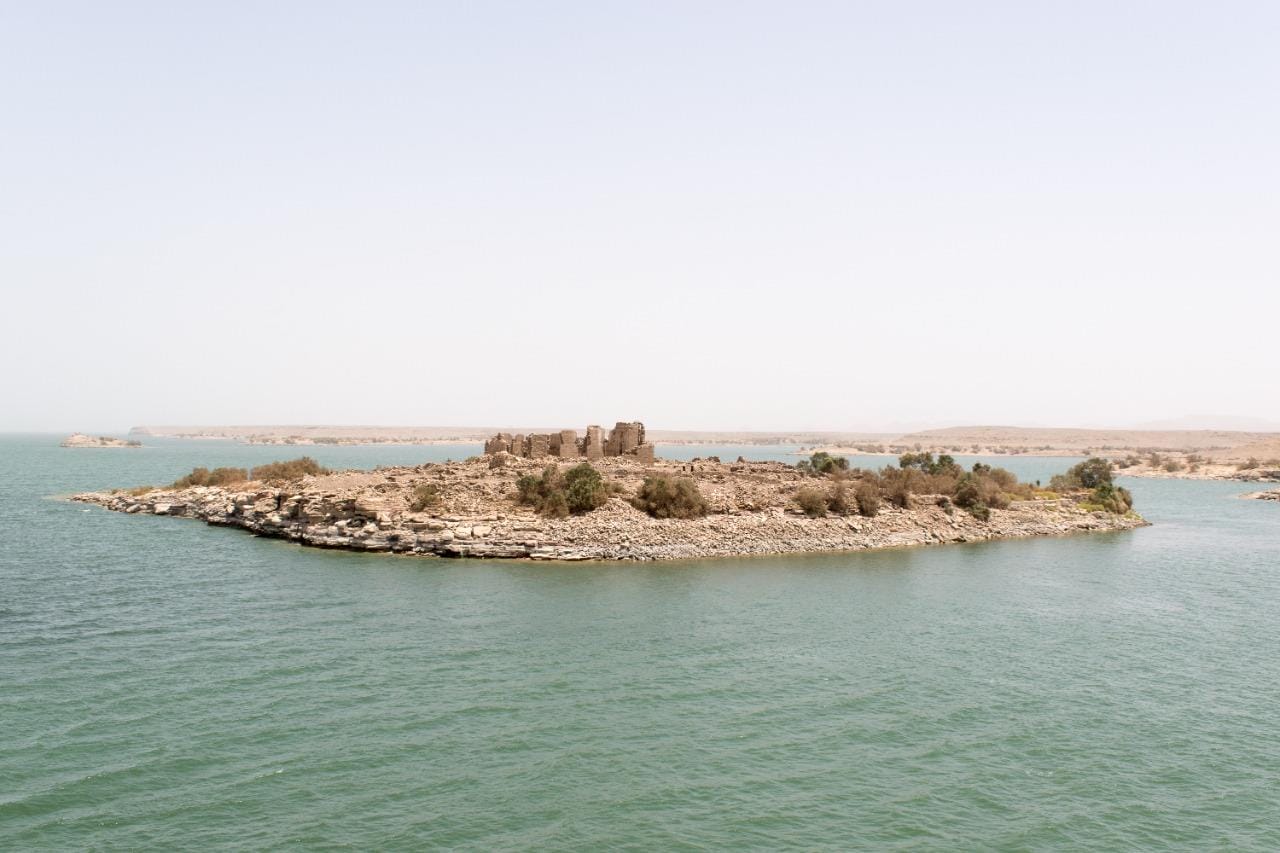Abu Simbel & the Nubian Temples Downstream
Abu Simbel
The Great Temple
Around 200 kilometers south of Aswan lies the Great Temple of Abu Simbel built by Rameses II, a magnificent and enduring testament to the ambition and power of this king. By partly dedicating a temple of this size and grandeur to himself, the king cemented his royal and divine claim to rule Egypt and Nubia in a decisive and clear way. His legacy certainly has endured, with droves of visitors flocking to Abu Simbel to take in the wonder of this monument.
The most striking features of the temple are undoubtedly the four 20-meter-high colossal enthroned figures of Rameses II carved from solid rock guarding the entrance. Walk through into a huge hypostyle hall containing larger-than-life symmetrical statues of the king, its walls decorated his military campaigns, and its ceiling adorned with flying vultures.
Abu Simbel was moved to its current location after a massive relocation project by the Egyptian government and UNESCO. The transfer was completed in 1968 and involved moving the entire temple some 200 meters further inland and around 65 meters up to higher ground to save it from flooding caused by the building of the Aswan High Dam.
The Temple is easily accessible as a day trip from Aswan by car, bus, or airplane. Nile cruises are also available from Aswan to Abu Simbel, stopping at several lesser-known sites along the way. If you prefer to explore at leisure, some small hotels and ecolodges are available near the site.
Don’t Miss
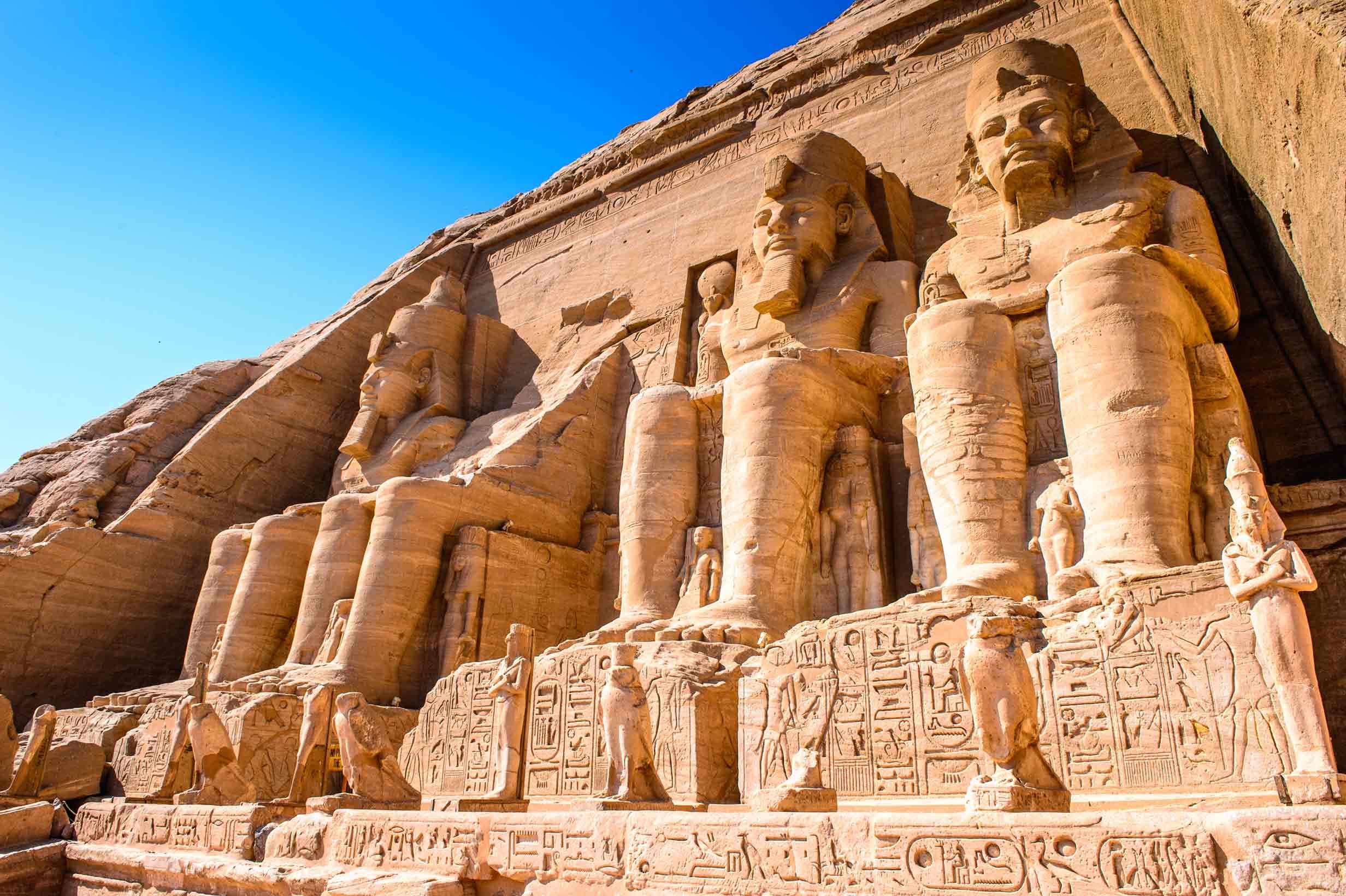
Looking down next to the feet of the four colossal statues
Where you’ll find figures on a smaller scale representing various members of the royal family.
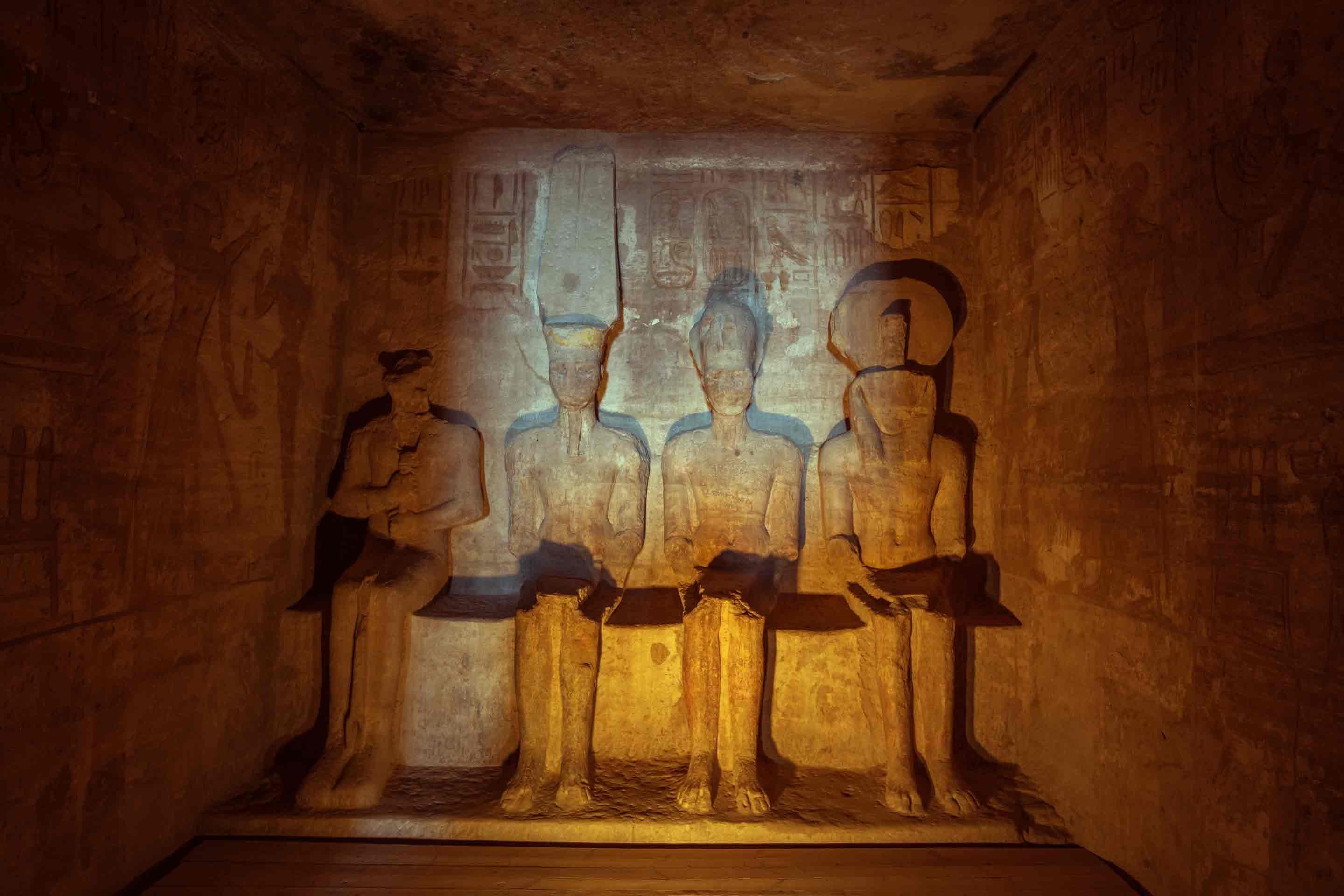
Visiting during the Solar Alignment Festival to see the ingenuity of ancient Egyptian architecture in action.
Twice a year on 22 February and 22 October, the sun rises and casts its light down the temple corridor, traveling around 60 meters, to reach the innermost sanctuary and illuminate the faces of Rameses, Amun, and Ra. Ptah, with his associations with the underworld, remains partly in the shadows. The precision in positioning the temple in exactly the right place for the light to cast and hit on these specific dates is a phenomenal feat in engineering. Thousands of people gather annually during the Solar Alignment Festival to watch the sun rise and enjoy the spiritual event with traditional song, dance, food, and a crafts market.
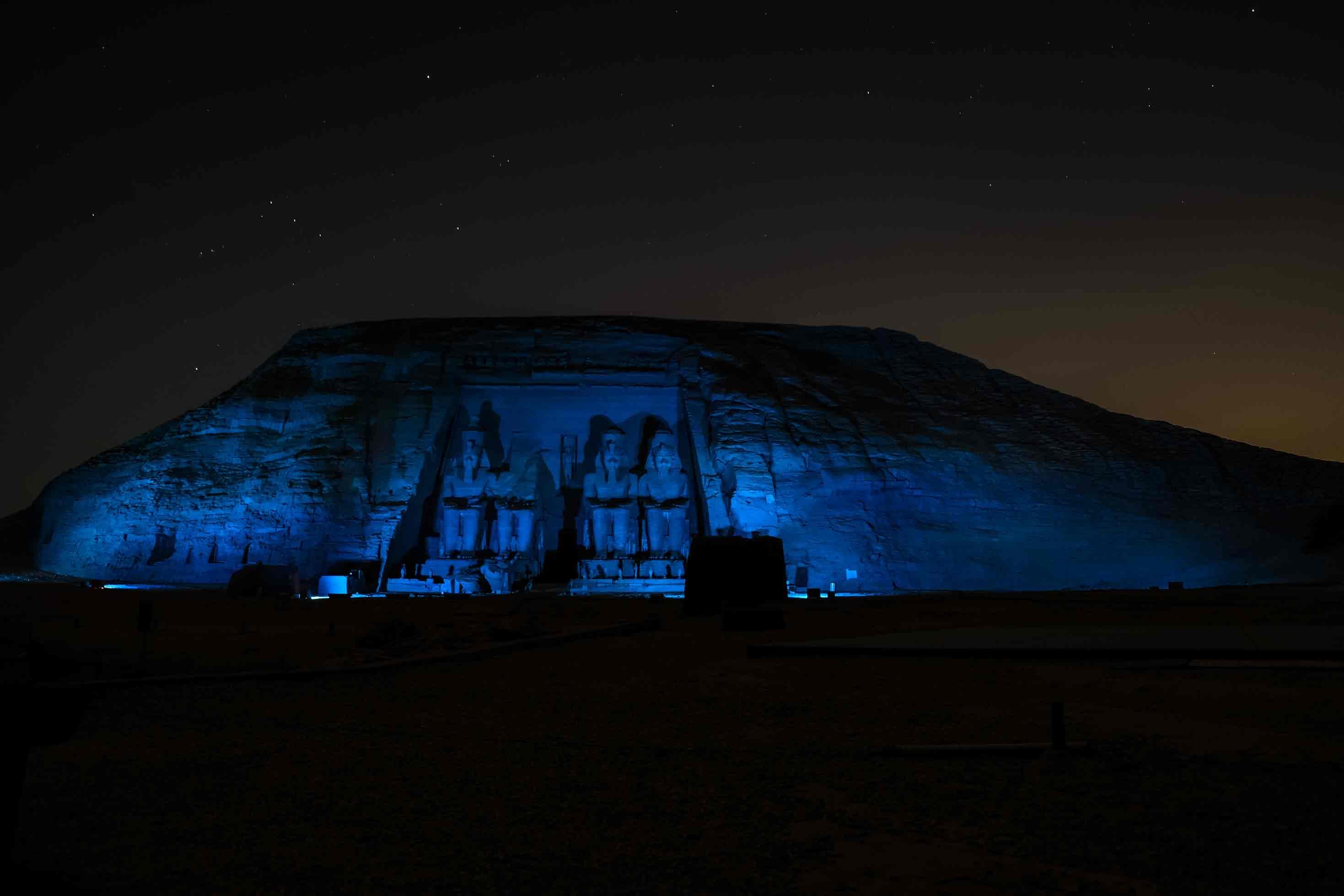
Watching the temple come to life in its original glory with a spectacle of color and music at the Sound and Light Show.
Every evening, visitors can take a trip back in time to learn more about the temple with entertaining narration and storytelling.
The Small Temple
A short distance to the north lies the Small Temple, dedicated to the goddess of love and music, Hathor, and Queen Nefertari, Rameses II’s wife. The facade is decorated with six 10-meter-high colossi depicting the king and his queen, carved directly from the rock. Inside, the columns, instead of having imposing statues of the king leaning against them, are decorated with the face of Hathor.
Nubian Temples North of Abu Simbel
These important ancient Nubian structures were moved for safeguarding to new sites during the UNESCO Nubia Campaign to save monuments from the rising waters caused by the High Dam, and they are classified as a World Heritage Site along with Philae and Abu Simbel.
- Today, the island of New Kalabsha is the home of several rescued monuments. The Temple of Kalabsha is primarily dedicated to the Nubian god, Mandulis, but the goddess Isis and her husband Osiris were worshiped here too. Head up the stairs of its large pylon to the roof for a great view of Lake Nasser and the High Dam. This temple is full of inscriptions whose stories are just waiting to be told.
- Don’t let the small size of the partly rock-cut Temple of Beit al-Wali fool you. Built by Rameses II, its interior is full of beautiful decoration whose colors are very well-preserved. Outside, you can study the beautiful reliefs of the walls of the courtyard. On one wall are Rameses II’s military exploits, and the other is decorated with figures from a dizzying array of cultures bringing tribute to the great king. Remember to look out for the giraffe!
- The site of New Wadi al-Sebua includes the temples of Wadi al-Sebua, Dakka, and al-Maharraqa. With sphinxes flanking you, walk up to the surviving pylon of the Temple of Wadi al-Sebua built by Rameses II. Enter its inner areas, which are carved directly in the rock, and admire gorgeous wall reliefs depicting the king enacting various rituals for the gods. Discover the fascinating history of the Temple of Dakka, the product of Nubian kings, Macedonian pharaohs, and Roman emperors, and explore the Temple of al-Maharraqa and see its unique architectural feature that may be the result of Roman influence.
- New Amada is where the temples of Amada and al-Derr, along with the Tomb of Pennut, are located today. Explore exquisite polychrome reliefs from the 18th and 19th Dynasties at the temples of Amada and al-Derr, respectively, and admire the gorgeous decoration of the Tomb of Pennut, a high-ranking official in Nubia during the 20th
- Qasr Ibrim, a rocky island in the middle of the lake and the only monument on Lake Nasser to have stayed in its original location. Once the site of a settlement, temple, and fortifications built on a cliff, the flooding of the lake submerged most of the ruins and transformed the site into an island.
Lake Nasser
Considered one of the largest man-made lakes in the world, Lake Nasser is a vast body of water spreading out over 5,250 sq km, formed by the construction of the Aswan High Dam across the Nile. Today, it supports thriving touristic cruising and fishing activities. This is one of the very few places in Egypt where you can spot the infamous Nile crocodile, since populations diminished post-dam construction. Luxury cruise ships and elegant private dahabiyyas (luxury sailboats) float around the lake transporting visitors to explore the historic sites on its shores.
